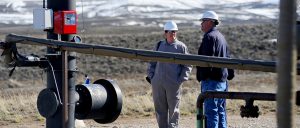5 Dirt Road Dust Control Challenges
Dirt Road Dust Control – Challenges and Solutions
Dirt road dust control challenges are troubling for housing developments and businesses alike. In 2012, the Federal Highway Administration (FHWA) reported that there were 1,357,430 miles of unpaved roads in the United States1. That accounts for nearly 35 percent of the more than 4 million miles of roadway in the U.S. And dirt roads are not just in rural areas. They can be found on construction sites, mines, equipment yards, rural subdivisions and farms, new housing developments, and urban alleys. Each type of dirt road is unique and may require a different type of treatment.
- Short-Term vs. Long-Term
Dirt roads on short-term construction sites, new housing developments, and other temporary locations can probably be treated effectively with a water truck. But if the construction project is a large one, that is slated to be going on for months, or the road is a permanent one like a mine haul road or a new rural subdivision, more long-term treatment may be required. - Traffic Volume
Dirt roads in areas with low traffic volume can often endure the fugitive dust generated. If the road is maintained by the city or county, their treatments may be enough. But if there is a business nearby or the area has become more developed than was originally planned for, a dirt road dust control plan may be required. According to the EPA, the average daily traffic volume (ADT) that can contribute to serious fugitive dust issues is anywhere from 50 to 4002. Your county road department can assist you in getting an accurate measurement of the traffic on the road. - Traffic Type
The fugitive dust generated on dirt roads by cars and pickup trucks is vastly different than that of commercial trucks and other vehicles. Expanding metro areas are encountering farming, dairy, construction, and other operations that were previously far outside of the city limits. Not only does commercial equipment cause more fugitive dust, but it also causes more damage to the road itself. Combining that with an increase in residential traffic can result in a need for dirt road dust control options. - State, City, and County Regulations
While the new rural subdivision may not think that the dust coming off their roads is of any consequence, the government entities may disagree. Especially when a county is not in PM-10 compliance. They have monitoring stations spread all over the county to measure the PM-10 levels. And if an area is not in compliance, optional dirt road dust control may become a requirement. - Picking the Right Solution
What works for dirt road dust control in Wyoming might not be effective in Arizona. And what works in Northern New Mexico may not perform well in Southern New Mexico or Texas. Sometimes a topical application of RoadSaver (our magnesium chloride product) will be enough. But if the soil has a lot of fines or is quite sandy, a custom blend like Dura-Loc may be required. An added benefit of applying a dirt road dust control product is that it can often help stabilize the road so that it doesn’t have to be re-worked as often.

Dirt road dust control can be a challenge wherever it is found and depending on the volume of traffic on those roads, the fugitive dust created by cars and trucks can be anything from slightly annoying to hazardous to the health of the residents. Contact your Desert Mountain Corporation sales representative or call us at (877) 718-3878 for more information on our dirt road dust control products. You can count on our over 30 years of experience.
Sources:
1 “Unpaved Roads: Safety Needs and Treatments” https://safety.fhwa.dot.gov/local_rural/training/fhwasa14094/
2 “When to pave a gravel road” https://www.epa.gov/sites/production/files/2015-10/documents/2003_07_24_nps_gravelroads_appd_0.pdf
Desert Mountain Corporation – Keeping Roads Safe Since 1990
